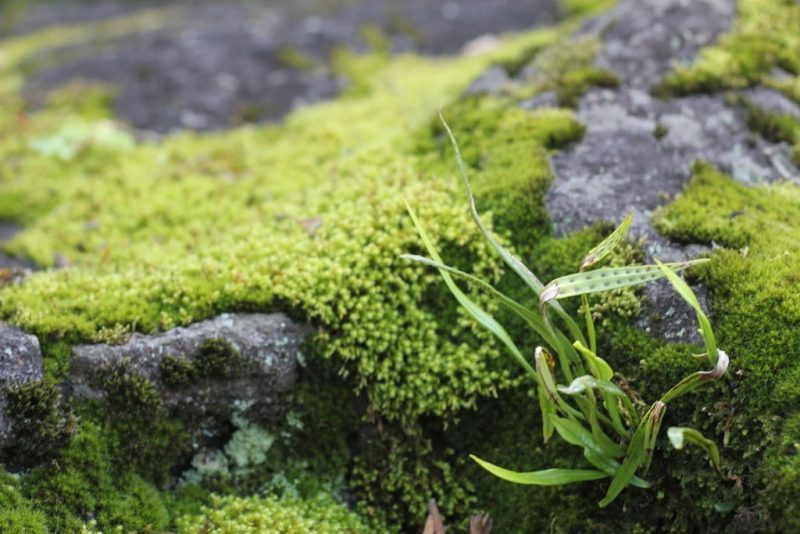Want to know how to control green algae in your soil? Algae are a green layer that grows on top of the soil caused by high levels of humidity and moisture in the area. Moreover, algae are not harmful to your plants. You can just simply remove them from your plant or soil by manually pulling them out.
Algae are plants but they don’t have roots, leaves, and stems. They develop well in warm, moist, and wet conditions, so they commonly grow on seed starter mix. Having algae on your plants can also be an indication that you are overwatering your plants. Algae will most likely grow on overwatered plants, especially during warm and humid weather.

How Does Algae Affect Your Plants?
Algae is not a parasite or a disease, so they won’t be able to cause direct harm to your plants. However, there are downsides to having algae on your soil.
Here are some of the ways algae can affect your plants:
If the algae on your soil are too thick, it can retain too much moisture, which can lead to mold formation and other diseases to your plants.
Secondly, algae can compete for moisture and nutrients. When they’re left unattended for a long time, they tend to form a hard crust on the soil, making it difficult for water to seep into your plant’s roots.
How to Eliminate Algae in Your Soil
Many gardeners prefer to get rid of algae in the soil even though this green substance won’t kill the plants. You might also want to get rid of algae for aesthetic purposes. Whatever the reason, here are some of the ways you can get rid of algae:
Tip #1: Do not overwater
Since algae thrive best in moist and in wet conditions, it’s best to avoid overwatering as it can lead to algae formation, as well as other diseases. Watering your plants properly decreases the risk of algae development.
Tip #2: Cultivating the soil
Soil cultivation not only helps your plants grow, but it can also remove algae that have grown around your plants. Cultivating the soil prevents the water from pooling above the base which leads to a moist and wet area where the algae would grow and germinate.
Tip #3: Cover from sunlight
Algae grow when both sunlight and watery condition is balanced. You’ll be able to minimize and ultimately eliminate algae growth by providing shade to certain areas and plants. Similar to other plants, the primary material to conduct photosynthesis is sunlight, so without exposure to the sun, algae won’t grow.
Tip #4: Use of bathroom cleaner
According to other gardeners and growers, bathroom cleaner is very effective in eliminating various algae in your pots, containers and garden. Bathroom cleaner has chemicals that can effectively clean dirt, by applying and spraying it into areas where algae are dominant, it will slowly kill those algae that are in your garden.
Tip #5: Sprinkle cinnamon on the algae
Cinnamon is known for its natural repellent attributes that can help stop the spread of algae, preventing it from developing and absorbing all the nutrients needed for your plant.
Tip #6: Take a damp paper towel
and wipe the surface of the soil where the algae are growing. This will cut and pull out the excessive algae that have grown around the area (flowerpots, containers, gardens).
Tip #7: Avoid using perlite, vermiculite, and peat moss
These materials retain a lot of water, which means they’ll stay moist most of the time. This is the perfect growing environment for algae to form.
Why Should You Grow Your Plants in a Hobby Greenhouse?
Even if your grow you plants in a greenhouse, algae may still grow if you aren’t careful. In fact, algae usually grow on the clear plastic walls of hobby greenhouses since they can get plenty of sunlight and they can grow without competing with other plants.
The good news is algae don’t have any roots, so you can easily wash them off with a pressure washer or a hose with a strong spray. You can also manually scrub them off with a sponge and soapy water.
Therefore, growing your plants in a greenhouse is still one of the best decisions you can make for your plants. For one, it keeps your plants safe from unpredictable weather. Tender perennial plants can easily be uprooted when strong winds, heavy rain, and storms come. Placing them inside a greenhouse keeps them safe from inclement weather.
A hobby greenhouse can also lower the risk of pest infestation. Aphids, mealybugs, spider mites, cabbage worms, and other pests will likely have a hard time getting inside your enclosed space. The plants inside your greenhouse will continue to grow happily.
Final Thoughts on How to Control Green Algae in Your Soil
Now that you know how to control green algae in your soil, you’ll be able to improve the aesthetic value of your garden or greenhouse. Remember that algae do not cause direct harm to your plants, so don’t worry if you notice a green layer of algae over your soil. Just remember the tips mentioned above and you’re good to go!
